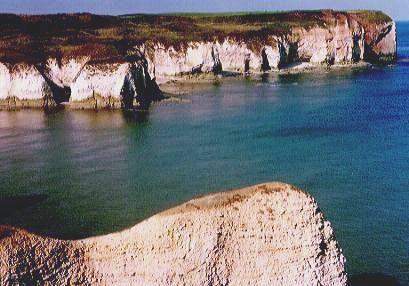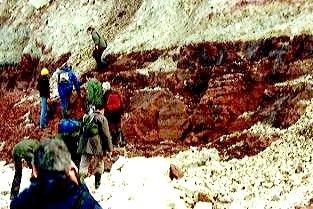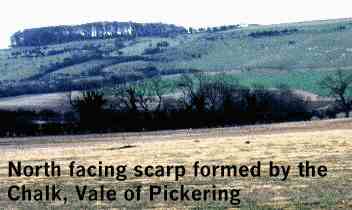Northern England in
the Cretaceous period ( 145 to 65 Ma)
|
|
The
Cretaceous period is marked by a significant increase in world sea-level, the
main cause being an increase in the number of mid-ocean ridges due to the
break-up of Laurasia and Gondwanaland. During Lower
Cretaceous times sea-level began to rise. Over the Cleveland Basin the rise
in sea-level led first to the deposition of richly fossiliferous
mudstones, the Speeton Clay Formation named after
the locality at which it is best exposed, about 6km S.E. of Filey. |
|
By the start of Upper Cretaceous times a world-wide rise in sea-level
resulted in nearly the whole of Britain and western Europe being covered by
the sea. Deepening seas led to the deposition of a thin limestone stained red
by iron oxides, the "Red Chalk".
|
|
|
|
The
chalk in East Yorkshire reaches a thickness of
about 550m. It is estimated, however, that a maximum of a 1000m. of chalk was deposited altogether, and that deposition was
at the rate of about 1mm. per 30 years, i.e. it
took 30 million years for the chalk to be deposited. The Chalk is best exposed
along the coast from the Speeton area, where the
"Red Chalk" can be seen, to Sewerby just
north of Bridlington. Inland, apart from quarries, it is mostly covered by
boulder-clay. Trond H. Torsvik , Rob Van der Voo, Ulla
Preeden , Conall Mac Niocaill , Bernhard Steinberger, Pavel
V. Doubrovine, Douwe J.J.
van Hinsbergen, Mathew Domeier
,Carmen Gaina, Eric Tohveri, Joseph G. Meert,
Phil J. A. McCausland, L. Robin M. Cocks |



